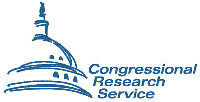United States Congress

Congressional Research Service Reports
Date of this Version
2007
Abstract
An important aspect of U.S. efforts to maintain and improve economic competitiveness is the existence of a capable scientific and technological workforce. A major concern of the 110th Congress may be regarding the future ability of the U.S. science and engineering base to generate the technological advances needed to maintain economic growth. Discussions have centered on the quality of science and mathematics education and training and on the scientific knowledge of those students entering other disciplines. Even students pursuing nonscientific and nonmathematical specialities are likely to require basic knowledge of scientific and technological applications for effective participation in the workforce. Charges are being made that many students complete high school scientifically and technologically illiterate.
Precollege science and mathematics instruction has an important relationship to the future supply of U.S. scientific and technological personnel and to the general scientific literacy of the nation. However, several published reports indicate important shortcomings in science and mathematics education and achievement of U.S. students at the precollege level. Some findings in the reports revealed that many science and mathematics teachers do not have a major in the discipline being taught; and that U.S. students, themselves, on international measures, perform less well than their international counterparts.
A September 2006 report on the future of higher education states that while our colleges and universities have much to applaud for in their achievements, there are some areas where reforms are needed. As higher education has evolved, it simultaneously has had to respond to the impact of globalization, rapidly evolving technologies, the changing needs of a knowledge economy, and a population that is increasingly older and more diverse.
In the 21st century, a larger proportion of the U.S. population will be composed of certain minorities — blacks, Hispanics, and Native Americans. As a group, these minorities have traditionally been underrepresented in the science and engineering disciplines compared to their proportion of the total population. A report of the National Science Foundation (NSF) reveals that blacks, Hispanics, and Native Americans as a whole comprise more that 25% of the population and earn, as a whole, 16.2% of the bachelor degrees, 10.7% of the masters degrees, and 5.4% of the doctorate degrees in science and engineering.
Several pieces of competitiveness legislation have been introduced in the 110th Congress to address the reported needs in science and mathematics education. H.R. 362 authorizes science scholarships for educating science and mathematics teachers. H.R. 363 provides funding for graduate fellowships and for basic research and research infrastructure in science and engineering. S. 761 is directed at increasing research investment, strengthening and expanding science and mathematics programs at all points on the educational pipeline, and developing an innovation infrastructure. This report will be updated as events warrant.


Comments
Published by Congressional Research Service, 98-871 STM, www.crs.gov, (2007)